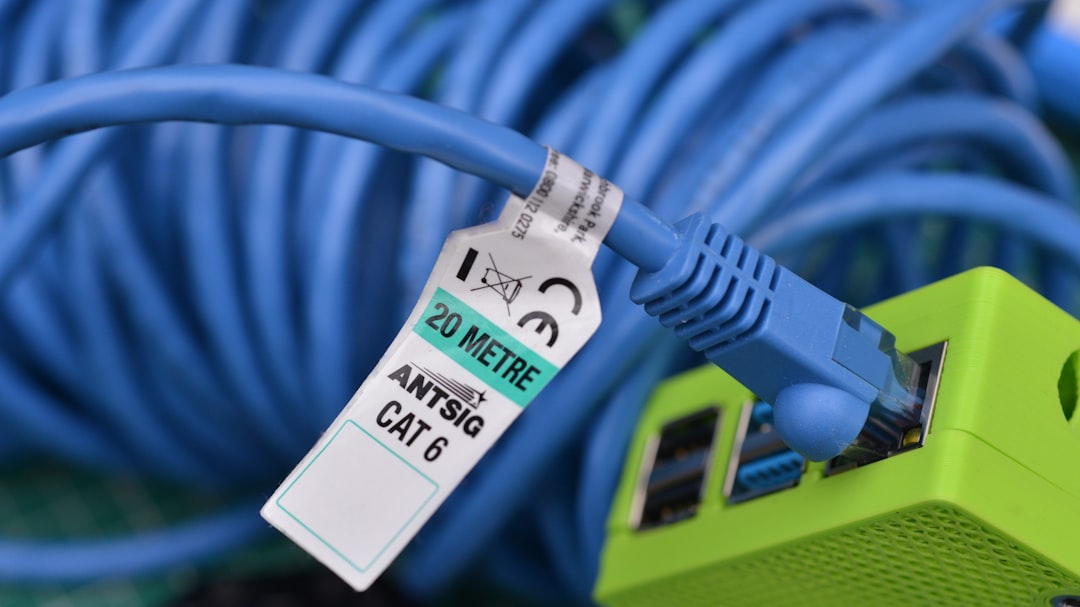You’re going about your day, trying to stream a video, attend a Zoom meeting, or download an important file, and suddenly your internet grinds to a halt. You run the Windows Network Troubleshooter, hoping for a quick fix, but instead, you’re hit with this vague and mildly alarming message: “An Ethernet cable is not properly plugged in or might be broken.” Now what?
TL;DR
If you see the message “An Ethernet cable is not properly plugged in or might be broken,” your computer believes it cannot detect a proper Ethernet connection. This could be due to a loose cable, a malfunctioning network adapter, outdated drivers, or even hardware-related issues. Begin troubleshooting by checking the cable connections and testing on another device. Updating drivers and restarting the router or PC may also resolve the problem.
Understanding the Error Message
This message is Windows’ way of telling you that it’s trying to connect via Ethernet, but it can’t get a signal through the cable. Essentially, it points to a communication breakdown between your computer and your router or modem. That breakdown could be caused by:
- A loose or unplugged Ethernet cable
- A damaged cable or port
- Disabled network adapter
- Outdated or corrupted network drivers
- Faulty network hardware like a damaged NIC (Network Interface Card)
First Line of Defense: Check Physical Connections
This might sound obvious, but you’d be surprised how often the solution really is just plugging something back in properly. Get started with these quick actions:
- Inspect the Ethernet cable: Ensure both ends of the Ethernet cable are firmly locked into the ports — one on your computer and the other on the router or modem. Tug lightly to make sure the connection is secure.
- Try a different port: Routers come with multiple LAN ports. Switch to a different LAN port and see if your computer detects the connection.
- Test with another cable: If another cable restores the connection, your original cable may be faulty.

Disable and Re-Enable Network Adapter
Sometimes, the network card itself encounters glitches that a quick disable-enable cycle can fix.
- Press Windows + X and select Device Manager.
- Expand the section labeled Network Adapters.
- Right-click your Ethernet adapter (it might be labeled as “Realtek PCIe GBE Family Controller” or similar).
- Select Disable device, wait a few seconds, then right-click again and choose Enable device.
Wait a few seconds and monitor if your computer regains connection. If not, continue with the next solution.
Update or Roll Back Network Drivers
Drivers serve as the messenger between your hardware and your operating system. If they are corrupted or outdated, problems like this can arise. Here’s how to update them:
- Open Device Manager and expand Network Adapters.
- Right-click your Ethernet device and select Update driver.
- Choose Search automatically for updated driver software.
If Windows says you already have the best driver installed but the issue persists, try rolling back:
- Within the same menu, click on Properties.
- Go to the Driver tab and choose Roll Back Driver.
Check Adapter Power Management Settings
Windows sometimes manages power settings a bit too aggressively. It might turn off your network adapter to save power:
- In Device Manager, right-click your network adapter and select Properties.
- Go to the Power Management tab.
- Uncheck “Allow the computer to turn off this device to save power.”
- Click OK and restart your system.
Ensure Ethernet is Enabled
Sometimes, Ethernet networking is simply unintentionally disabled.
- Press Windows + R, type
ncpa.cpl, and press Enter. - Look for Ethernet in the network connections window.
- If it’s labeled as Disabled, right-click it and select Enable.
Verify BIOS and UEFI Settings
If your Ethernet port has been disabled from the BIOS or UEFI settings, your operating system won’t detect it no matter what fixes you apply.
- Restart your machine and press the appropriate key (like F2, Del, or Esc) to enter BIOS/UEFI.
- Navigate to the Integrated Peripherals or a similarly named section.
- Ensure that the LAN or Ethernet controller is Enabled.

Restart Networking Equipment
Your router or modem might be to blame rather than your computer. To reset your networking gear:
- Power off your computer.
- Unplug your router and modem from the power outlet.
- Wait 30 seconds before plugging them back in.
- Once all lights are back on, restart your computer and check your connection.
Test Ethernet on Another Device
To further isolate the problem, use the same cable and port to connect a different device, such as a laptop:
- If the other device secures a connection successfully, the issue is likely with your computer’s network hardware or configuration.
- If it doesn’t connect either, then the cable or router port may be the issue.
Use Network Reset
Windows includes a handy tool called Network Reset that clears and reinstalls all network adapters:
- Go to Settings > Network & Internet.
- Scroll down and click Network reset.
- Click Reset now and confirm.
- Your PC will restart and reinstall the network components. You’ll need to reconnect to Wi-Fi after the reboot, but check if Ethernet is working first.
Advanced Troubleshooting Steps
If none of the above methods resolved the issue, you might want to dive deeper into advanced diagnostics:
- Use Command Prompt: Run commands like
ipconfig /allorping 8.8.8.8to verify network reachability. - Check Windows Event Viewer: Look for warnings or issues under “System” related to networking.
- Try Safe Mode with Networking: If Ethernet works in Safe Mode, a third-party app or firewall might be interfering with the connection.
When to Consider Hardware Repair
If it’s confirmed that your cable and router work just fine, but no solution helps, it might be time to accept that your Network Interface Card (NIC) or Ethernet port is damaged. You can:
- Install a USB-to-Ethernet adapter: This is a quick and cheap workaround for broken internal ports.
- Replace or add a PCIe NIC: If you’re using a desktop, this involves installing a replacement network card into an available PCIe slot.
Conclusion
Few tech issues are more frustrating than internet troubles—especially when you’re tethered to your desk with an Ethernet cable that should just work. But with a methodical approach—starting with your cables and ending with drivers or BIOS settings—you can get back online without pulling your hair out.
Whether you’re a casual user or a network nerd, understanding the nuts and bolts of Ethernet connections can empower you to troubleshoot smarter and fix faster. So next time you see the dreaded message “An Ethernet cable is not properly plugged in or might be broken,” you’ll know exactly how to tackle it.
